
The Genesis Nomad, also known as Sega Nomad, is a handheld game console manufactured by Sega and released in North America in October 1995. The Nomad is a portable variation of the Sega Genesis home video game console. It could also be used with a television set via a video port. It was based on the Mega Jet, a portable version of the home console designed for use on airline flights in Japan.
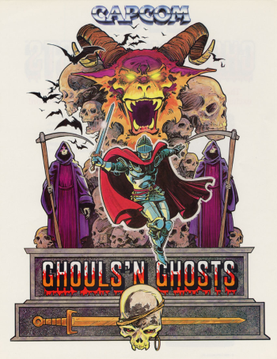
Ghouls 'n Ghosts, known as Dai Makaimura in Japan, is a side-scrolling platform game developed by Capcom, released as an arcade video game in 1988 and ported to home platforms. It is the sequel to Ghosts 'n Goblins and the second game in the Ghosts 'n Goblins series.

Columns is a match-three puzzle video game released by Jay Geertsen in 1989. Designed for the Motorola 68000-based HP 9000 running HP-UX, it was ported to Mac and MS-DOS before being released commercially by Sega who ported it to arcades and then to several Sega consoles. The game was subsequently ported to other home computers, including the Atari ST.
In the history of video games, the fourth generation of video game consoles, more commonly referred to as the 16-bit era, began on October 30, 1987, with the Japanese release of NEC Home Electronics' PC Engine. Though NEC released the first console of this era, sales were mostly dominated by the rivalry between Sega and Nintendo across most markets: the Sega Mega Drive and the Super Nintendo. Cartridge-based handheld game consoles became prominent during this time, such as the Nintendo Game Boy, Atari Lynx, Sega Game Gear and TurboExpress.

Altered Beast is a 1988 beat 'em up arcade video game developed and published by Sega. The game is set in Ancient Greece and follows a player character chosen by Zeus to rescue his daughter Athena from the demonic ruler of the underworld, Neff. By collecting three power-ups in a level, the player character transforms into one of five magical beasts. It was ported to several home video game consoles and home computers. Altered Beast was the pack-in game when the Genesis launched in North America and the Mega Drive in Europe.

Landstalker: The Treasures of King Nole is an action role-playing that was developed by Climax Entertainment and released for the Sega Genesis in 1992 in Japan and 1993 elsewhere. Players take on the role of the treasure hunter Nigel as he navigates a three-dimensional world through an isometric viewpoint, solving puzzles and fighting enemies.

Dynamite Headdy is a platform video game developed by Treasure and published by Sega for the Sega Genesis in 1994. The game follows a puppet named Headdy in his efforts to stop an evil puppet king from taking over his world. Headdy can throw his head at enemies to defeat them and use it to pull himself to various areas and move objects. The player can find a wide variety of "heads" which act as power-ups that provide different effects and alter gameplay.

Gunstar Heroes is a run and gun video game developed by Treasure and published by Sega. It was Treasure's debut game, originally released for the Sega Genesis in 1993. The game's premise is centered around a pair of characters, the Gunstars, in their efforts to stop an evil empire from recovering four powerful gems. The characters can fire guns and perform a series of acrobatic maneuvers to fight enemies across each stage. There are four weapons in the game which can be combined with one another to create different shot types.
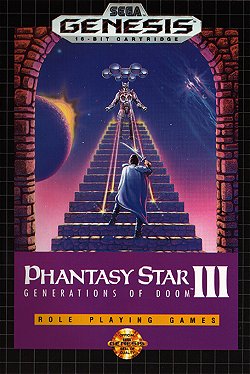
Phantasy Star III: Generations of Doom is a role-playing video game developed and published by Sega. It was released for the Sega Genesis in Japan in April 1990 and worldwide the following year. It is the third game in the original Phantasy Star series, and is a distant sequel to the previous games. However, gameplay is similar to the previous games, with turn-based combat and random encounters. Players explore various overworld maps and dungeons in order to progress through the game. It was later re-released on the Virtual Console and on retro collections such as the Phantasy Star Collection, Sega Genesis Collection, and Sonic's Ultimate Genesis Collection.
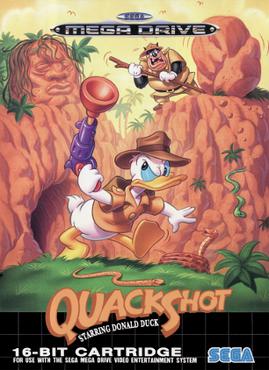
QuackShot Starring Donald Duck, released in Japan as QuackShot Gurujia-ō no Hihō, is a 1991 platforming video game developed and published by Sega for the Sega Genesis. The game was released in Europe in 1991, in North America on December 19, 1991, and in Japan the following day. QuackShot stars Donald Duck and his three nephews, Huey, Dewey, and Louie, as treasure-hunters. The game was influenced by the Indiana Jones film series.

Bonanza Bros. is a 3D-style, 2D side-scrolling stealth action game developed and released by Sega in 1990. It is one of the earliest arcade games powered by the Sega System 24 arcade system board. It was ported to various home systems, including the Mega Drive/Genesis, Master System, PC-Engine/TurboGrafx-CD, and several home computers.

Castle of Illusion Starring Mickey Mouse is a 1990 platform game developed and published by Sega and released for the Mega Drive/Genesis. An 8-bit version of the game was later released for the Master System and Game Gear. The game follows Mickey Mouse on a quest to save Minnie Mouse from the evil witch Mizrabel. It is the first game in Sega's Illusion video game series starring Mickey.

The Sega Genesis, known as the Mega Drive outside North America, is a 16-bit fourth generation home video game console developed and sold by Sega. It was Sega's third console and the successor to the Master System. Sega released it in 1988 in Japan as the Mega Drive, and in 1989 in North America as the Genesis. In 1990, it was distributed as the Mega Drive by Virgin Mastertronic in Europe, Ozisoft in Australasia, and Tectoy in Brazil. In South Korea, it was distributed by Samsung Electronics as the Super Gam*Boy and later the Super Aladdin Boy.
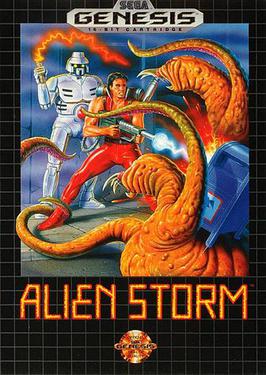
Alien Storm (エイリアンストーム) is a beat 'em up shooter released as an arcade video game by Sega in 1990. It was ported to the Genesis/Mega Drive and Master System. The Mega Drive version was re-released on Wii's Virtual Console in 2007 and was also included on Sonic's Ultimate Genesis Collection for Xbox 360 and PlayStation 3. The game was also re-released on the Nintendo Switch Online + Expansion Pack in 2022.

Alien Soldier is a side-scrolling run and gun video game developed by Treasure and published by Sega for the Mega Drive. Retail copies were released in Japan and PAL territories while in North America it was only available exclusively via the Sega Channel cable service. The story follows a powerful being named Epsilon-Eagle, who after being nearly killed becomes determined to avenge his near death and save his planet. The character has a variety of weapons and moves that the player must master to complete the game. Many gameplay ideas are borrowed from Treasure's earlier Mega Drive release, Gunstar Heroes (1993). However, Alien Soldier puts an emphasis on challenging boss fights with short and easy levels serving as downtime in-between.
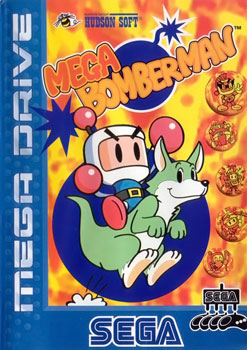
Bomberman '94 is a video game from the Bomberman series which was developed and published by Hudson Soft for the PC Engine and released on December 10, 1993, in Japan. It was later re-developed by Westone and re-published by Sega as Mega Bomberman on the Sega Mega Drive/Genesis in 1994 in other areas. The PC Engine Bomberman '94 was later released outside Japan through the Virtual Console and the PlayStation Network.

McDonald's Treasure Land Adventure is a 1993 platform game developed by Treasure and published by Sega for the Sega Genesis. Based on the McDonald's fast food restaurant chain, specifically its McDonaldland marketing campaign, players control Ronald McDonald in his efforts to retrieve the missing pieces of a map that lead to the location of a buried treasure from a group of villains. Ronald can defeat enemies by using a magic attack and can latch onto hooks with his scarf to reach higher platforms.

















